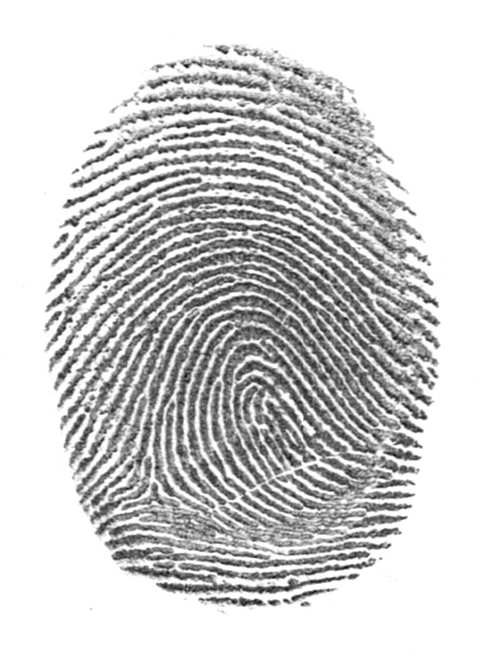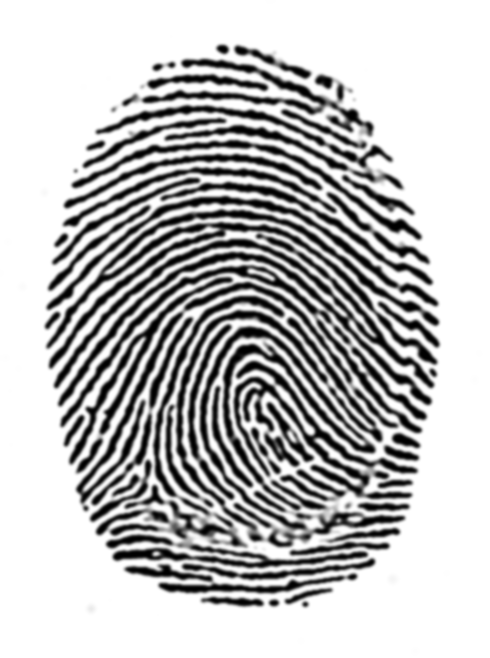About this Project
This application has been developed as a part of bachelor's thesis at Brno University of Technology - Faculty of Information Technology (BUT FIT). The topic of this thesis was Generating a 3D Fingerprint Model from input fingerprint image.
This application consists of two main parts. The first part of the application uses custom filter library to apply image filters to enhance fingerprint images. This library consists of several filters imported from image processing modules.
The second part uses the processed image to make a 3D model of the fingerprint. The model can then be used to print an accurate representation of human fingerprint using a 3D printer. This model can either be planar, curved or mapped to a finger model.
Prerequisites
For now this has only been tested on Ubuntu gnu/linux machines. It should however be possible to run it in on most distributions, WSL and virtual machines of most linux distributions.
This guide is for Ubuntu machines only. Before cloning repository, you need these to succesfully use the application.
-
python version 3.10 is a requirement might work on earlier python 3 versions
sudo apt install python3.10 -
virtualenv package for virtual enviroment creation, other packages are installed automatically later
pip install virtualenv
Installation
This will install the application and its components into the Documents directory. It will also install several required python packages, including venv, which is used to create a virtual enviroment. Just paste and these commands into the command line.
-
Go to a suitable installation folder, for example Documents:
cd /home/username/Documents -
Clone the repository to this directory:
git clone ssh://git@strade.fit.vutbr.cz:3022/xlanro00/BP_DP-xlanro00.git -
Go inside the newly created directory:
cd BP_DP-xlanro00 -
Create and activate the virtual enviroment:
virtualenv .venv && source .venv/bin/activate -
Automatically install required python modules from requirements.txt:
pip install -r requirements.txt
Now, you are all set to run the application. Examples of how to do this are shown in the section bellow.
Filtering images
Once all the requirements are installed, the application is ready to use. Fingerprint sample is located in res/examples, its name is Palec_P4.tif.
-
You will need to enter the virtual enviroment every time you want to use the application.
source .venv/bin/activate -
The application requires input and output filenames including path from the root project directory, dpi and filter list as shown bellow.
python3 src/main.py input_file output_file dpi filters
There are two ways to enter the filters:
-
manually list all filter names and their parameters on the command line:
python3 src/main.py res/examples/Palec_P4.tif res/examples/Palec_P4_from_cline.png 600 total_variation weight=0.15 median ksize=5 -
load them from preset in a JSON configuration file, that can be used to tune and modify existing presets, or create new ones:
python3 src/main.py res/examples/Palec_P4.tif res/examples/Palec_P4_from_preset.png 600 --config conf/conf.json git_example
Configuration and presets
There is an option to input the filter series as a preset from JSON configuration file. Here the presets are stored and are ready to be used whenever needed. You can usehow many filters you need as long as you like the output. It is therefore highly recommended to check the output after every preset change.
Filter used in the example above is listed bellow, along with the general form of configuration file.
<style> table { border-collapse: collapse; width: 100%; } th, td { padding: 8px; text-align: left; border-bottom: 1px solid #ddd; } th { background-color: #f2f2f2; } .code { font-family: 'Courier New', monospace; background-color: #f5f5f5; padding: 8px; } .language-json { color: #333; } </style>| General format | Woking example |
|---|---|
|
|
To avoid accidental loss of information caused by modifying presets that have been used to generate stl files, these presets are stored inside a JSON file db.json.
This file serves as a simple database for storing presets, stored presets are modified by adding generated hash of all the filters in that preset. There is also an option to save current command line setting as a preset using -d switch and it's new name:
Available filters with parameters
Overview of all implemented filters and their parameters with descriptions is listed below.
-
median blur
- ksize (int) - Kernel size, determines how large of an area the filter processes.
-
gaussian blur
- sigma (int) - Gaussian kernel standart deviation, determines the weight of further pixels on the currently processed pixel.
-
bilateral blur
- diameter (int) - Diameter of pixel neighborhood used for filtering.
- sigmaColor (int) - Determines the weight of pixels of different color.
- sigmaSpace (int) - Determines the weight of further pixels.
-
bilateral_scikit
- sigmaColor (float) - Determines the weight of pixels of different color.
- sigmaSpace (float) - Determines the weight of further pixels.
-
nlmeans (non-local means)
- patch_size (int) - Size of patches used for denoising.
- patch_distance (int) - Distance in pixels where to search for patches.
- h (float) - Cut-off distance, higher means more smoothed image.
-
total_variation
- weight (float) - Denoising weight, determines how much the image will be denoised.
-
block_match
- sigma (float)- Standart deviation
-
unsharp mask scikit
- radius (int) - Radius of the gaussian filter.
- amount (float) - Strength of the unsharp mask, determines how much of the mask will be used for filtering.
-
unsharp mask pil
- radius (int) - Radius of the gaussian filter.
- amount (float) - Strength of the unsharp mask, determines how much of the mask will be used for filtering.
- threshold (int) -
-
farid
-
meijering
-
sato
-
hessian
- sigmas (float) - Standart deviations
-
invert
-
scale_values
-
binarize
- threshold (int) - Value to cut differentiate pixels.
-
binarize_otsu
-
add_margin
- margin (int) - Number of pixels to add to the sides of the image.
- color (int) - Color value of newly added pixels.
-
erode
- kernel (numpy matrix) - Shape of the kernel used to erode image.
-
dilate
- kernel (numpy matrix)- Shape of the kernel used to dilate image.
Comparison
Image before processing the fingerprint and after applying a presets.
| Before | After |
|---|---|
 |
 |
Generating curved finger model
It is possible to generate stl model using the --stl switch. This requires more parameters, first of which is the type of generated fingerprint.
If the mode is set to c, the output model will be a curved finger model, with optional parameters following the filename controlling its shape.
First optional parameter is papilar line height height_line, second is thickness of the model height_base,
third the rate of curvature along x axis curv_rate_x and the third is the rate of curvature along y axis curv_rate_y.
-
General form for curved stl generation:
python3 src/main.py input_file output_file dpi --config config_file preset --stl c height_line height_base curvature_x curvature_y -
Working example curved stl generation:
python3 src/main.py res/examples/Palec_P4.tif res/examples/Palec_P4_from_preset.png 600 --config config/config.json git_example --stl c 2 10 2 2
Generating planar finger model
Using p mode makes the generated fingerprint model flat.
Optional parameters are height of the papilar lines and base thickness.
-
General command form for planar stl generation:
python3 src/main.py input_file output_file dpi --config config_file preset --stl p height_line height_base -
Working example of planar stl generation:
python3 src/main.py res/examples/Palec_P4.tif res/examples/Palec_P4_from_preset.png 600 --config config/config.json git_example --stl p 2 10
Mapping to existing finger model
Using m mode modifies the preexisting finger model to contain fingerprint.
First optional parameter is papilar line height height_line, second is the number of iterations iter to make the finger mesh denser. Higher number of itertions results in denser finger mesh and better result.
The next three parameters are axis offsets for the finger, finger_x, finger_y, finger_z.
These control the location of the finger. They need to be set only if the user wants to move core of the print closer to the center of the finger model.
The last parameter finger_model allows the user to choose custom finger model.
-
General command form for mapped stl generation
python3 src/main.py input_file output_file dpi --config config_file preset --stl m height_line iter finger_x finger_y finger_z finger_model -
Working example of finger mapping
python3 src/main.py res/examples/Palec_P4.tif res/examples/Palec_P4.png 600 --config conf/conf.json ridge --stl m 0.2 2 0 0 0 res/finger_backup/finger-mod.stl
Usage
When in doubt, you can always check the help with:
python3 src/main.py --help
Which will print out the following message.
usage: main.py [-h] [-m | --mirror | --no-mirror] input_file output_file dpi ([-c | --config config_file preset] | [filters ...]) [-s | --stl_file p height_line height_base | --stl_file c height_line height_base curv_rate_x curv_rate_y | --stl m height_line iter finger_x finger_y finger_z finger_model [-d | --database database_filename]
Program for processing a 2D image into 3D fingerprint.
positional arguments:
input_file input file path
output_file output file path
dpi dpi of used scanner
filters list of filter names and their parameters in form [filter_name1 param1=value
param2=value filter_name2 param1=value...]
options:
-h, --help show this help message and exit
-m, --mirror, --no-mirror
switch to mirror input image
-s [STL_FILE ...], --stl_file [STL_FILE ...]
create stl model from processed image
-c CONFIG CONFIG, --config CONFIG CONFIG
pair: name of the config file with presets, name of the preset
Troubleshooting
| Error message | Solution |
|---|---|
| main.py: error: the following arguments are required: input_file, output_file, dpi, filters | You probably forgot to include some of the required arguments. |
| ERROR: Input file res/Palec_P14.tif does not exist | The file you want to process does not exist, check the filename again. |
| ERROR: Config file not found | The config file you want to load config from does not exist, check the filename again. |
| ERROR: Preset not found in config file | The preset is not present in selected config file, check the file again or select the correct config file. |
| ERROR: Filter undefined_filter not found | One of the filters from command line is not defined in the library, check its name. |
| ERROR: Unrecognized generation mode | The first parameter of stl generation should be p, c or m, check it again. |
| ERROR: Line depth must be less than plate thickness | When generating a cast, the depth must be less than the base plate thckness, otherwise it would have holes on the other side. |
| ERROR: Depth of plate height must be positive | Cannot generate negative base plate thickness, check order of arguments. |
| ERROR: Base and line height must both be positive | In curved generation any negative argument is an error, casts are only for planar mode. |
| ERROR: Fingerprint image is outside of the finger model | Outside of range of the finger, fingerprint cannot be mapped to nothing. Try to change finger_x, finger_y and finger_z parameters. |
Roadmap
- Load and store image
- Apply basic image processing filters
- Scale the image using given dpi
- Create filter library with more filters
- Add more suitable filters to the library
- Use presets from config files
- Add the option to save current filter preset to config file
- Add the option to modify filter parameters
- Convert the processed image to flat stl lithophane
- Add the option to curve the lithophane into the shape of a finger
- Export final model ready for 3D print
- Add the option to map the fingerprint onto a given finger model
- Finalize, document everything
Author
Rostislav Lán - xlanro00@stud.fit.vutbr.cz
Supervisor
Ing. Petr Malaník
Links
Project Link: https://strade.fit.vutbr.cz/git/xlanro00/BP_DP-xlanro00